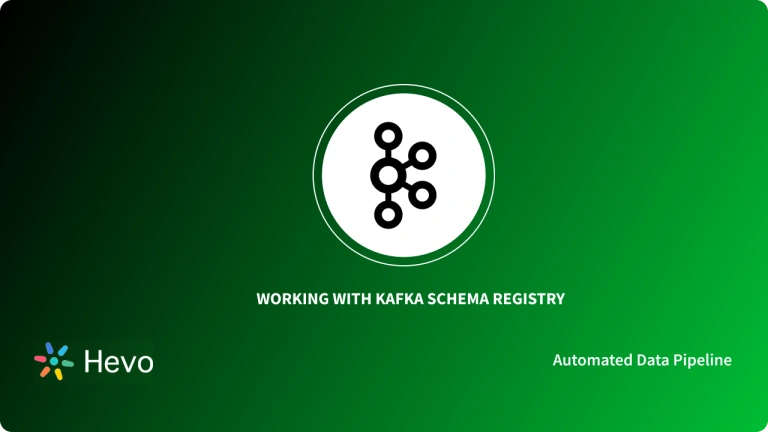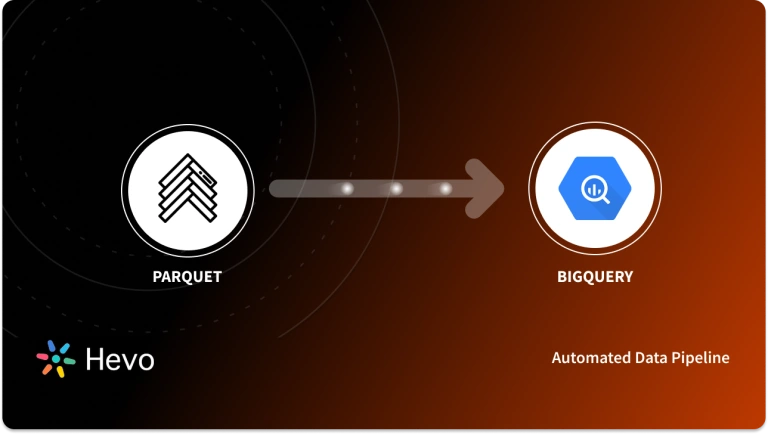While working with huge amounts of data, Data serialization plays an important role in the performance of the system. Data Serialization converts complex data structures, such as graphs, trees, etc., into a format that can be easily stored or transmitted over the network or across different distributed systems and programming languages. The serialized data formats are often standard formats and are platform and language-agnostic, for example, JSON, XML, and binary formats such as Avro and Parquet.
In this blog, we will compare Avro vs Parquet and let you decide which format best suits your requirements.
Table of Contents
Importance of Choosing the Right File Format
Choosing the right file format is pivotal as it impacts the efficiency and compatibility of data exchange between systems. Several factors come into the picture when deciding the right serialization file format.
- Size: The compactness of serialized data can significantly improve the system’s storage requirement and IO network cost.
- Speed: The time it takes to serialize and deserialize data impacts the performance of data-intensive applications.
- Compatibility: It is important to ensure that the chosen file format should be compatible across platforms and languages for interoperability.
- Readability: Sometimes, ensuring the readability of serialized data becomes essential for debugging, configuration, and documentation purposes. In such cases, human-readable formats are preferred.
What is Avro?
Definition and history
Apache Avro is an open-source data serialization format, developed by Apache Hadoop and was first released in 2009. It is a row-based format meaning all the fields are stored together for a row. Hence it can be the best choice when there is a need to retrieve all the fields together.
Avro stores data in binary format and schema in JSON format along with data. As data and schema are placed together, the consumer application need not have code generated to read data of specific schema. Schema defines the names of the fields the data file contains along with their data types and relations between them.
The row-oriented file is stored in the following way.

Key features
- Schema evolution
As the schema is included in the data file, it enables seamless deserialization of data in case of faster schema evolution, when the fields get changed frequently. It provides backward and forward compatibility. Hence data serialized with older schema can be deserialized with new schema and in the same way, data serialized with newer schema can be deserialized with older schema. In Avro Schema evolution is allowed through optional fields and default values.
- Flexibility
As Avro is language-agnostic, It is easy for data engineers to use Avor to serialize data in one language and deserialize in another language in another component. In today’s modern ecosystems, all the components may be written in different languages.
Avro can be easily integrated with big data tools like Apache Spark, Apache Hadoop, Apache Flink, and Apache Kafka. This makes it a versatile choice for building distributed architectures.
- Data compaction
Avro used a binary format which benefits data compaction. Binary data is highly compact compared to JSON or XML formats. Hence the speed of serialization and deserialization of data also increases. Data compaction becomes a primary requirement in data-intensive applications where storage and network costs are crucial. Avros implements various compression algorithms with the tradeoff between time and storage.
- Dynamic Typing
As mentioned earlier, the data is accompanied by the schema, no code generation is required with static data types. It allows to building of generic data processing systems.
Use cases
- Streaming Analytics
- Data interchanges
- Messaging systems
Choosing between Avro and Parquet affects how efficiently you can store and retrieve data. Maximize your data efficiency with Hevo Data’s automated and real-time data integration platform. Sign up now for a free trial and see the difference Hevo can make.
Hevo is a fully managed, no-code data pipeline platform that effortlessly integrates data from more than 150 sources into a data warehouse such as Asana. With its minimal learning curve, Hevo can be set up in just a few minutes, allowing users to load data without having to compromise performance. Its features include:
- 24/5 Live Support: The Hevo team is available 24/5 to provide exceptional support through chat, email, and support calls.
- Connectors: Hevo supports 150+ integrations to SaaS platforms, files, Databases, analytics, and BI tools. It supports various destinations, including Google BigQuery, Amazon Redshift, and Snowflake.
- Transformations: A simple Python-based drag-and-drop data transformation technique that allows you to transform your data for analysis.
- Schema Management: Hevo eliminates the tedious task of schema management. It automatically detects the schema of incoming data and maps it to the destination schema.
- Real-Time Data Transfer: Hevo provides real-time data migration, so you can always have analysis-ready data.
What is Parquet?
Definition and history
Parquet is a column-based open-source data format, originally designed by the joint efforts of Cloudera and Twitter and was launched in 2013, since then it has been widely adopted by the Hadoop ecosystem and is now part of it. It is the default file format in Apache Spark.
Parquet was designed to optimize analytical operations on massive and complex data. Paquet is a columnar format in which all the values of single columns are stored together. That is why Parquet is more useful for query-intensive workloads. This makes it different from row-based file formats like CSV and Avro.
Columnar file formats offer high performance by enabling better compression and faster retrieval of data.
Column-oriented file:

Key features
- Columnar storage
Parquet stores data in columnar format. This format makes it easy to fetch a specific set of columns from the data and can help boost query performance.
- Compression
Parquet supports various compression techniques like Gzip, Snappy, and Lzo. This decreases the storage requirement and the amount of data that needs to be scanned while executing the query.
- Metadata
Parquet files store column metadata and statistics like minimum and maximum of values and encoding used. This metadata helps query engines in query optimization and allow automatic schema inference.
- Predicate Pushdown
It is a feature in SQL that enables the query to avoid scanning irrelevant data from disk. The predicates are sent to the storage layer to filter data as per requirement. So most of the data are filtered while reading from file only, which increases the performance by reducing the amount of data it has to read.
- Portability
Parquet works great with serverless architecture like Amazon Redshift and BigQuery but it is compatible with many other languages and frameworks like Apache Spark.
Use cases
- Analytics workloads
- Data Archival
- Data warehousing
Avro vs Parquet: Detailed Comparison
| Properties | Avro | Parquet |
|---|---|---|
| Logo | ||
| Storage | Row-oriented storage | Column-oriented storage |
| Schema Evolution | Supports schema evolution with optional fields and default values. | Supports schema evolution with compatibility rules. |
| Read/Write Speed | Faster writes and slower reads. | Faster reads and slower writes. |
| Compression | Supports multiple compression techniques but may not be as efficient as parquet. | Supports multiple compression techniques. |
| Usability | Data Interchanges between systems and in the streaming pipeline | Data warehousing and Analytics workloads |
- Schema:
Both file formats are self-describing meaning metadata are embedded in files only along with compression codec.
- Performance:
Avro provides faster writes and slower reads whereas Parquer offers optimized reads and slower writes.
- Compression:
Both, Avro and Parquet file formats support compression techniques like Gzip, Lzo, Snappy, and Bzip2. Parquet supports lightweight compression techniques like Dictionary Encoding, Bit Packing, Delta Encoding, and Run-Lenght Encoding. Hence Avro format is highly efficient for storage.
- Usability:
Avro is more used in storing data in a Data lake. Parquet files fit with Apache Spark.
- Data Types and Support:
Both support Schema evaluation and also support basic data types like integer, float, string, etc., and complex data structures such as arrays, maps, and structs.
Scenarios: When to Use Avro and When to Use Parquet
Scenario 1: Building Data warehouse for analytics workload
Format: Parquet
Use Case: An e-commerce company is building a warehouse to analyze customer behaviors, sales, and product placements.
Reason: For OLAP workload e.g. for aggregation and reporting, the query performance is best with parquet because of its columns nature.
Scenario 2: Streaming Data Pipeline
Format: Avro
Use Case: Building streaming data pipeline for IoT networks or Banking for fraud detection
Reason: Avro works best with Apache Kafka on the real-time data stream. Avor is preferable for data interchanges between the systems and provides simpler data serialization.
Conclusion
The decision of choosing between Avro vs Parquet data formats completely depends on your unique use case.
Avro is a Row-oriented file format that is the best choice for data communication across platforms and real-time processing. It is also used in OLTP where a whole row needs to be processed.
Parquet becomes the first choice for analytical workload, it stores data in columns, and provides efficient compression techniques, reduces storage costs, and boosts query performance.
Choosing a big data file format depends on understanding your data complexities and of course on your unique use case.
Last but not least, whether you need Avro’s schema evolution or Parquet’s columnar storage, choose Hevo Data to ensure seamless data transformation and integration. Register for a personalized demo to learn how Hevo can enhance your data pipeline efficiency, check out our unbeatable pricing for the best plan for your needs.
Frequently Asked Questions
1. Is Parquet better than Avro?
Parquet is often better than Avro for read-heavy and analytic workloads due to its columnar storage format, which allows efficient data retrieval and compression. Avro, on the other hand, is more suitable for write-heavy operations and data serialization.
2. What is the difference between CSV and Parquet and Avro?
CSV is a simple text-based format best for readability and interoperability but lacks support for data types and efficient storage. Parquet is a columnar storage format optimized for read-heavy analytic workloads with efficient data compression. Avro is a row-based format designed for data serialization, supporting schema evolution and efficient write operations.
3. When should I use Avro?
Use Avro when you need:
a. Efficient data storage & transfer
b. Schema evolution
c. Language independence
4. What are the disadvantages of Avro?
Avro’s disadvantages include less human readability due to its binary format, potentially higher complexity in handling schemas, and slower performance compared to simpler formats like JSON or CSV for small-scale data or lightweight tasks.




